The best insect eating plants to grow indoors
Carnivorous plants make great houseplants but their care requirements are a bit different to regular houseplants.
In this article I’ll tell you about 5 easy to grow carnivorous houseplants and tips for how to keep them healthy.
This post contains affiliate links. Please read the disclosure for more info.
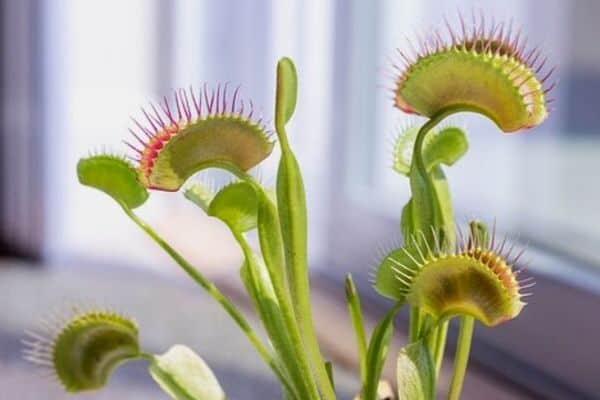
Carnivorous plants are usually found in boggy areas that are waterlogged and low in nutrients so they’ve adapted to these conditions by trapping insects to get the nutrients that they need.
They usually eat flies and other small insects but some species can even trap small frogs, lizards and rats.
Not all carnivorous plants are suitable for houseplants, but here are 5 that will do well indoors.
5 CARNIVOROUS HOUSEPLANTS
1. Venus Flytrap (Dionaea muscipula)
Venus Flytrap is probably the most
well-known carnivorous plant.
It has strong jaws that trap flies and other small insects when the hairs of the plant are touched.
The insect is broken down by the digestive juices of the plant, providing it with nitrogen and other nutrients, which are often lacking in the soil where it grows.
Venus Flytraps grow well indoors in a brightly lit spot with the pot sitting on a saucer of water to keep the roots moist.
If there aren’t many flies in your house, you can occasionally add some high nitrogen fertilizer.
Venus Flytraps are popular with kids, but make sure that they don’t set off the traps too often because they’ll stop working.
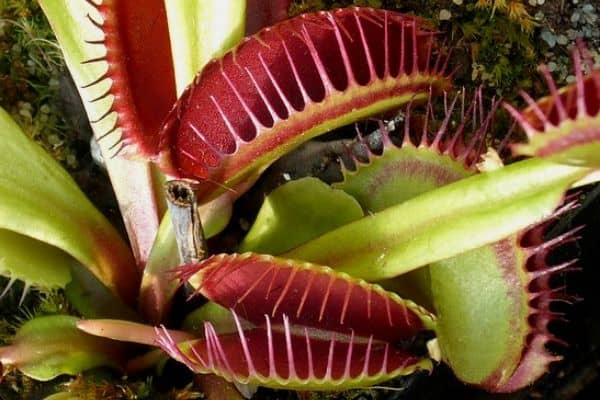
2. Cape Sundew (Drosera capensis)
Cape Sundew is another
carnivorous houseplant that traps insects by wrapping its sticky leaves around
its prey.
It’s a small plant, with the leaves only reaching about 1.5 inches (4 cm) high. During the summer it produces violet flowers. [1]
Cape Sundews are easy to grow and re-seed easily so you’ll get lots of free plants.
They love bright light, so they’ll be happy growing on a sunny windowsill.

3. Spoonleaf Sundew (Drosera spatulata)
Spoonleaf Sundew is a pretty carnivorous plant that traps
insects using its leaves.
They grow 1 to 2 inches (2.5 to 5 cm) wide and they can be bright red, orange or maroon in color with pink or white flowers during summer. [2]
Spoonleaf Sundew re-seeds readily and it can become almost weed-like if you let it grow freely.
It’s one of the easiest carnivorous houseplants to grow and care for.
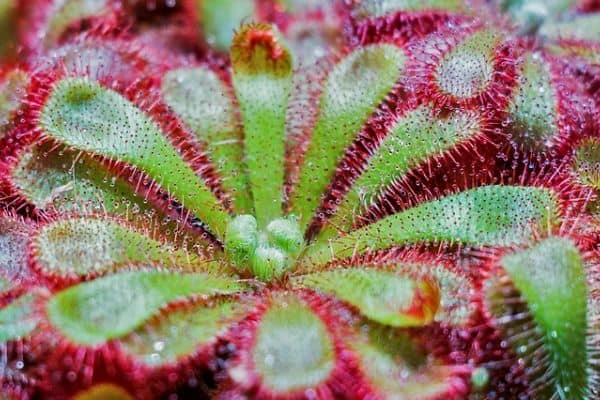
4. Butterwort (Pinguicula vulgaris)
Butterwort is a small carnivorous plant with yellowish-green sticky leaves that trap small
insects.
It grows 1 to 6 inches (3 to 16 cm) high and has beautiful purple or white flowers in spring. [3]
Butterworts prefer indirect light instead of direct sunlight so they’ll grow well near a window.
During their dormant phase they don’t catch prey and they can be allowed to dry out in a cool, dark spot.
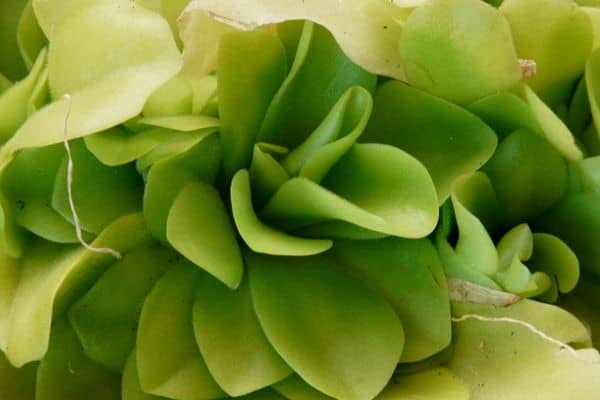
5. Tropical Pitcher Plants (Nepenthes spp.)
Another
interesting carnivorous plant is the Tropical Pitcher plant, also
called Monkey Cups.
It has a pouch of sticky sap that it uses to lure and trap insects, but it can also trap small spiders, lizards and worms in the wild.
Tropical Pitcher plants originate from areas with nitrogen-poor soil and get their nitrogen from the insects once they are digested.
When grown outdoors they also catch falling leaf litter which produces nitrogen when it breaks down.
You could sprinkle a couple of small leaves inside the cups occasionally if you’re growing them indoors.

Caring for carnivorous houseplants
Most carnivorous
plants like a humid environment so you can place them in an open terrarium or
in the bathroom.
Potting medium
Carnivorous plants can be planted in a mix of perlite, peat moss
and sand.
Regular potting mix or soil from the garden is not suitable and will cause the plants to die.
Watering carnivorous houseplants
It’s best to water carnivorous plants with distilled water or rainwater because tap water and spring water are too high in minerals.
Place the pot on top of a saucer filled with water to keep the roots moist.
Dormancy
Most carnivorous plants go dormant during the winter, so move them to a cool spot, away from bright light during the cooler months.
So there is my list of 5 carnivorous houseplants. With the right care you can enjoy these insect eating plants for many years.
RELATED ARTICLES
- 10 Colorful Houseplants
- How To Create A Living Plant Wall
- 10 Popular Indoor Succulents
- 10 Best Indoor Hanging Plants
- 9 Herbs To Grow Indoors
Have you tried growing carnivorous plants indoors? Let me know in the comments below.
Are you on Pinterest? I have boards dedicated to Houseplants and Garden Ideas that you may enjoy. You can also find me on Facebook.
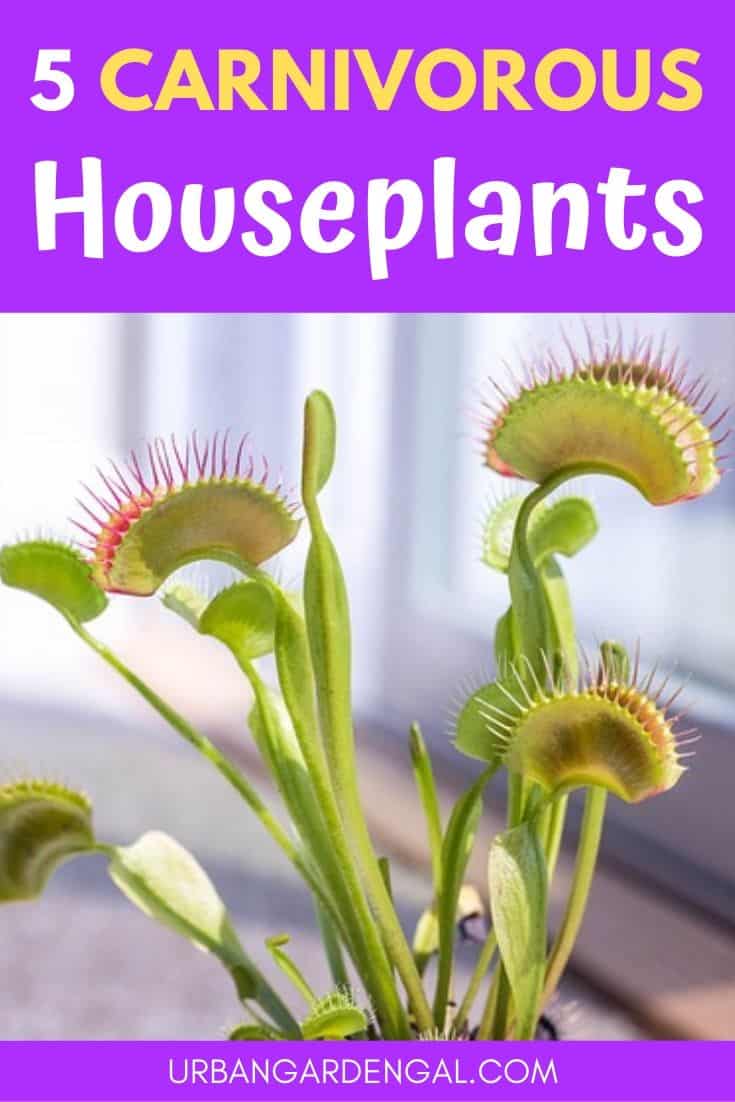



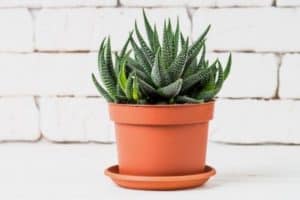


I think we could have used the tropical pitcher plant for our car. We just went through a season where spiders were continually getting into the car. I almost had an accident like 5 times from the ear piercing screams of my kids. SERIOUSLY!
We have pitcher plants all around Singapore. When I come across them, I always looks inside to see what they have caught. Great post- I learned a lot, as I only knew of 2 out of 5 of these carnivorous plants. Thanks for the plant lesson 🙂
The only carnivorous houseplant I’d heard of before was the Venus Flytrap. I’m glad I read this. I live in the countryside, with lots of flies and other insects, so a carnivorous plant would be useful.
I haven’t heard of most of these plants but my son had a venus fly trap as a kid and he loved it.
I love these carnivorous houseplants! I am learning every day with you, Kelly.
ooh I hadn’t realized carnivorous plants could be houseplants too! This was a very interesting read learning about the mechanisms used by different plants to catch their prey. Don’t think I’d be able to keep them as houseplants though – mainly because I’d spend too much time watching them for some action!
Love reading your posts! i always learn about new plants and flowers. I had only seen the venus flytrap until now!
Wow, I actually never thought of using carnivorous houseplants to cut down on fruit flies etc! That’s so cool! Would these plants thrive in colder regions too? Even in my bathrooms I don’t get much humidity during our cold Canadian winters!
Wow! i have seen such plants in the botanical gardens and natural museums but not at home. Must be super fun!
I’m always up for putting new plants in my home but I didn’t know about carnivorous plants. This post is quite informative and I learned a lot about it. The only plant I knew from this group is the Venus flytrap.
I love this article. I think it might be too cold here. I found some plants like cape sundew in our dam. I’m in Australia.
Hi Sally, you can grow carnivorous plants indoors in most parts of Australia but they do best in warm, humid conditions.
Thanks for the marvellous post! I certainly enjoyed reading it. I will remember to bookmark your blog and come back down the road.
Thanks Alyce, I’m glad you found it helpful.